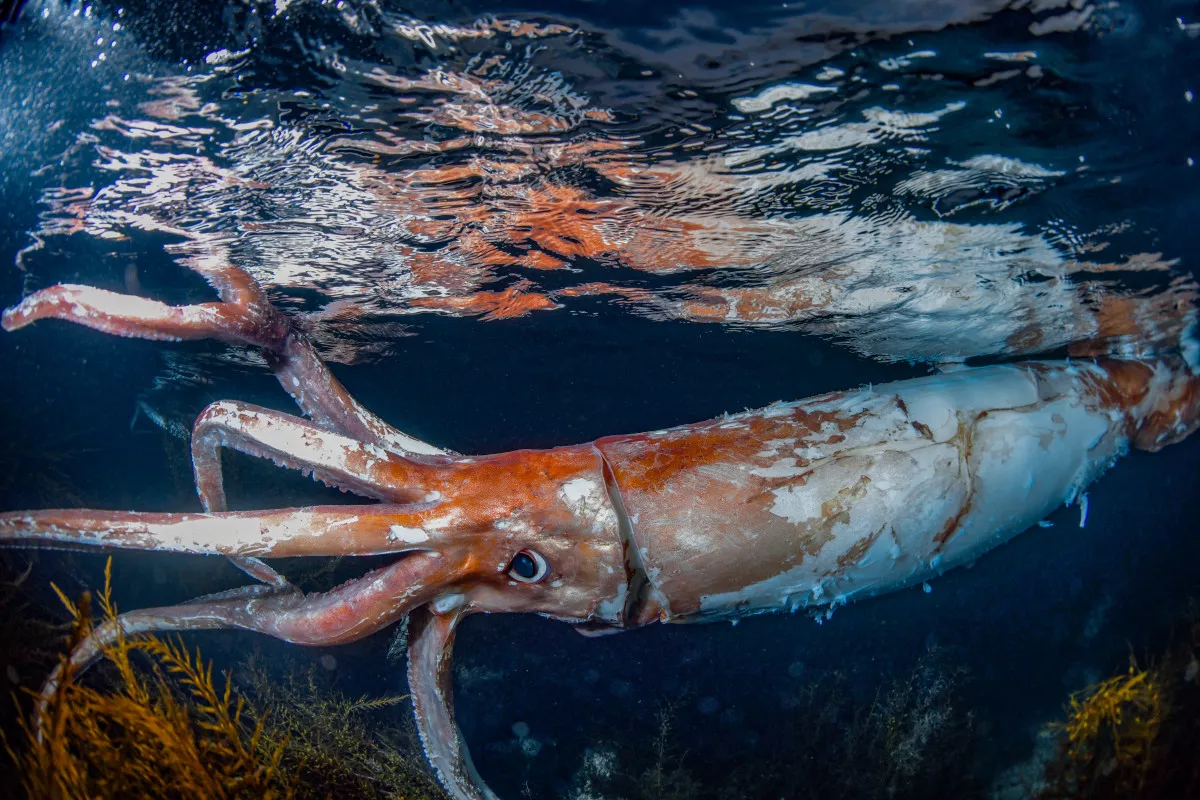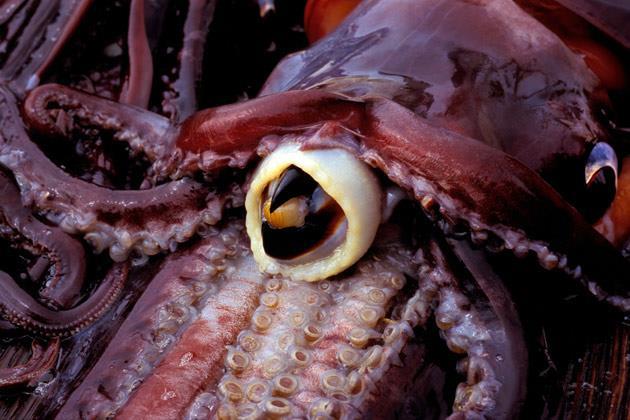The giant squid is a species of cephalopod that is known for its monstrous size: around 12-13 meters. It wields the title of the largest invertebrate on Earth. This incredibly large creature serves as an example of abyssal gigantism, the tendency for deep-sea invertebrates to grow much larger than their shallow-water dwelling counterparts. To put it into perspective, if the giant squid were measured from the tips of its tentacles to the top of its head, it would be the same size as about 12 baseball bats lined up (I would need all of them to feel safe around one). The largest giant squid ever discovered measured a whopping 18 meters. In addition to its terrifying body size, it has the largest eyes of any animal on Earth—roughly the size of a soccer ball. It uses them to locate objects in the deep, dark waters—a place where most animals couldn’t see anything. Even through the picture, its enormous eyes pierce straight through your soul.

These beasts are almost never seen by humans because of the depths of waters they occupy: from 1,000 to 2,000 feet. They dwell in the depths of all oceans around the world. Most research conducted and recorded about these creatures is from dead ones washing up onto shore and their carcasses being found in the stomachs of whales. It is very unlikely you would find one in the wild (thankfully), unless you tried very hard to do so. Although they are rare to find, they are known for being extremely aggressive and territorial; there are several documented accounts of giant squid attacking deep sea divers. They use their eight long and slimy tentacles to grab their prey and pull them down into the water. If you’re especially unlucky, they will pull you towards their beak, which is the hard and sharp opening of its digestive system, used to slice their victim’s flesh into swallowable pieces. It is safe to say you do not want to cross paths with this horrifying brute. Beware of becoming human salami.

When prompted with the name “giant squid,” a popular myth might come to mind. The Kraken is a cephalopod-looking monster originating in Norse mythology. According to the myth, the Kraken haunts the Northern European seas, and it tricks sailors into thinking its massive body is an island to land on (which barely makes sense because why would an island be shiny and red). Once the ship is within the beast’s grasp, it pulls the entire vessel underwater, destroying it entirely. Finally, it brutally slaughters the sailor and the unlucky passengers that happen to be on it. There are reported sightings of the Kraken dating back to the 1700s. It is now known that this mythological creature was based on the sightings of giant squid. Surprisingly, Greek and Roman naturalists already knew about existence of the giant squid; Aristotle even wrote about it in his works. However, the extreme rarity of this mystic animal sparked the mythos to be written about it. Similar massive, squid-like beasts are featured in Japanese and Chinese mythology, showing how one elusive creature was able to produce so much wonder.
I noticed the link you make between abyssal Gigantism and mythological portrayal. This seems intuitive, as many myths use everyday objects/animals enhanced or exaggerated in some way to create a more relatable moral (in this case the danger of the sea). I am curious however, given how unlikely spotting a giant squid would be, why myths based on deep sea creatures are so prominent?
That’s super interesting and terrifying. I remember learning about the battles that Giant Squids would have with Whales, so I can see why they’re on the list of things to avoid running into in the ocean. I didn’t know that they were territorial. Do they have areas which they “hang out” in which they declare as “theirs,” or are they territorial in the sense that they don’t want anything near them? I hope that the divers that got attacked managed to get away alright; I definitely wouldn’t be able to sleep for weeks if that happened to me. Considering how big they are and how rare it is to see one, I do wonder about what their life-cycle is like: how long do they live? how are they born? how do they find mates? So many questions that I suppose I will leave to biologists to answer.